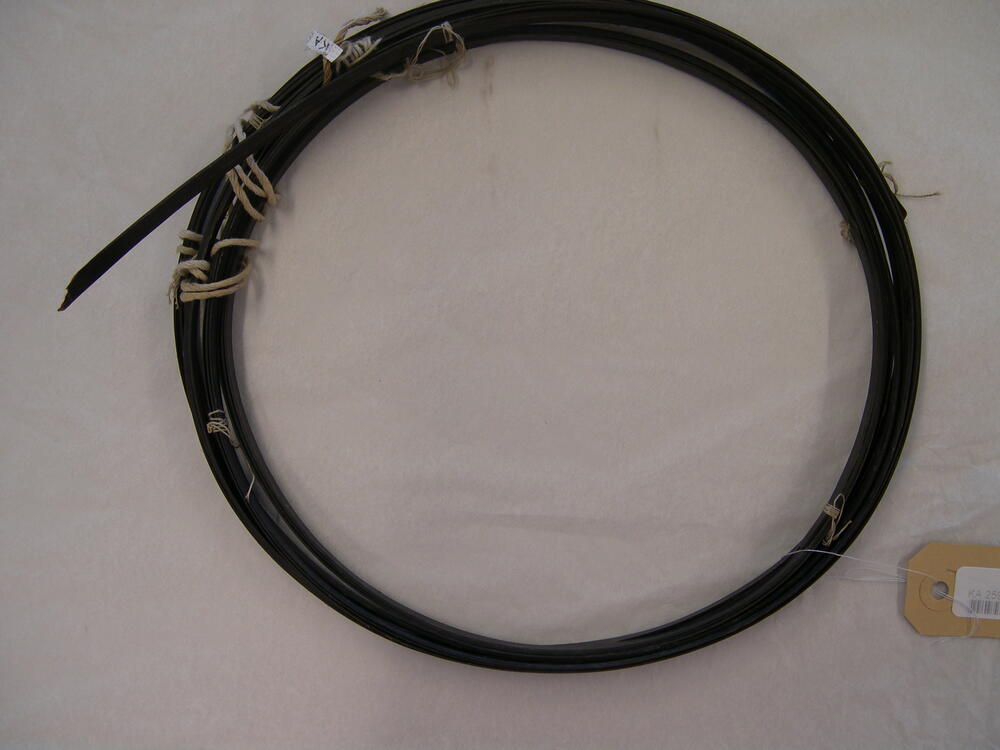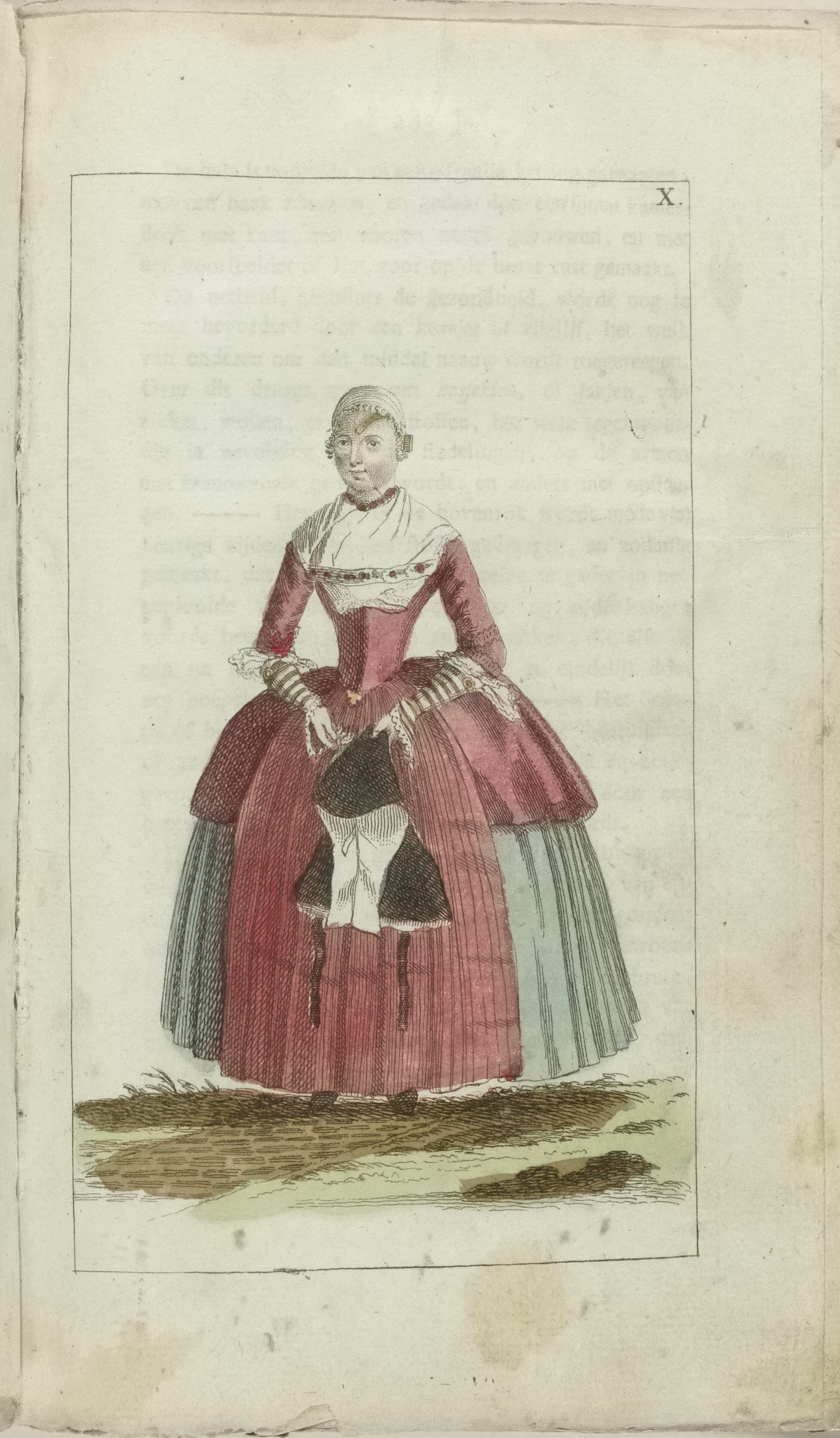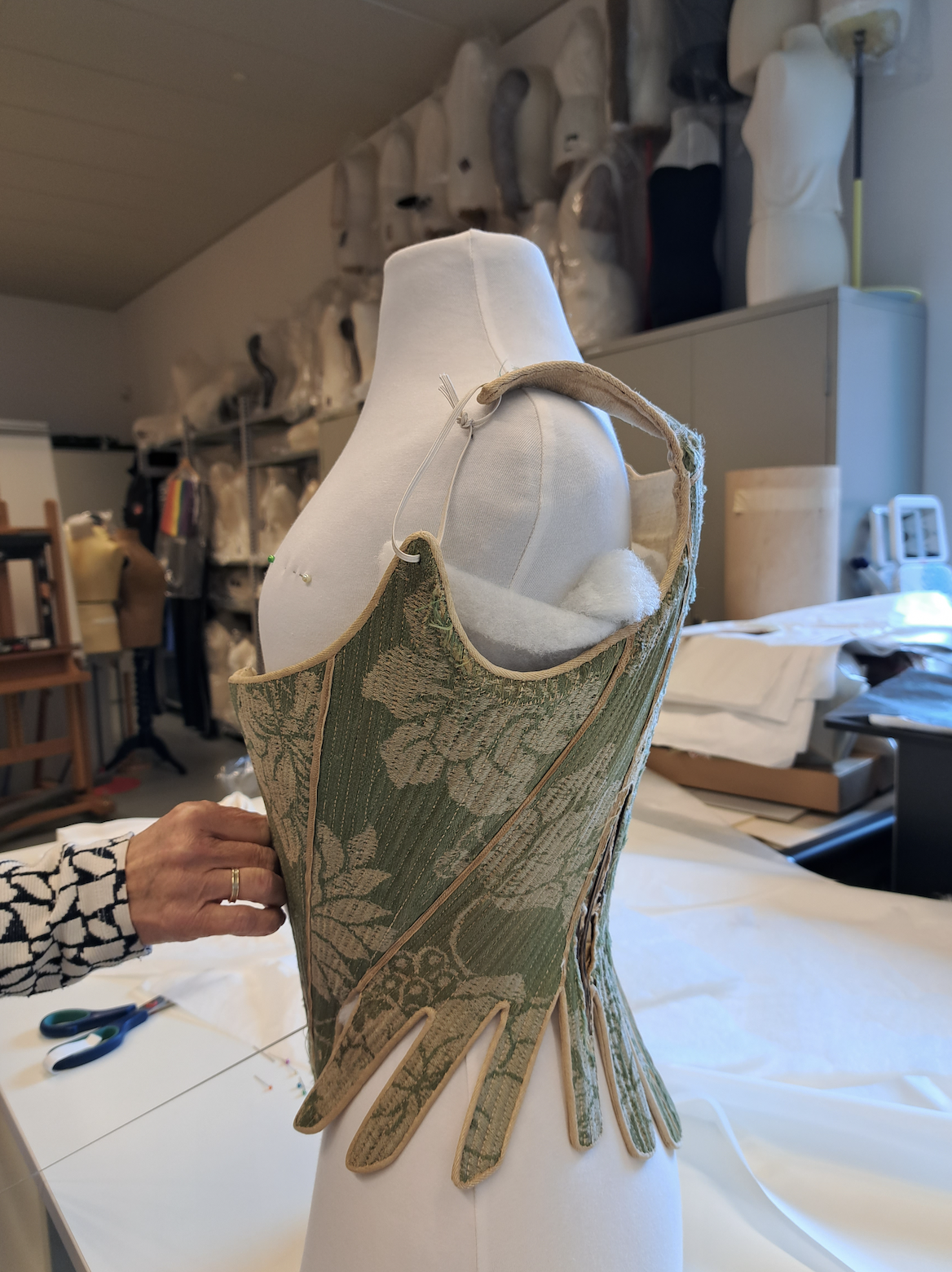Fashioned by Nature, Reimagined by Tech: The Journey of a Green Damask Corset
Artikel
Structure and materials
The corset is made from stiffened linen, cardboard, whalebone (specifically baleen), and green wool damask featuring a floral design. The desired shape was achieved using ten pieces of damask fabric for the exterior, while the lining was created by assembling three pieces of white linen, stiffened with tragacanth.
White linen was locally produced in the Netherlands during the 18th century. As a more affordable and durable alternative to cotton, it became a commonly used material for clothing linings.
Damask comes in two varieties: wool and silk. Since silk was very expensive, it was worn only by the extremely wealthy. This corset is made of wool damask, which was more affordable than silk and thus worn by the moderately wealthy. Damask was popular among the Zaan population during the 18th century, although the wool damask used in the Netherlands was imported from Norwich, England.

Whalebone, also known as baleen, has a rich history. It is a type of keratinous hair found in the 'beard' of baleen whales and can be easily shaped with heat. Baleen was used in fashion from the mid-to-late 16th century and became increasingly popular for European corsets in the 18th century. Due to the hardness of the material, sewing baleen required significant strength and was therefore mainly done by men. In the mid-18th century, the Zaan region was one of the most important whaling centers in Western Europe. However, overfishing led to a significant decline in whale populations, making baleen an increasingly expensive luxury. By the early 20th century, it was replaced by synthetic plastics, which reduced production costs.
Form and function
Corsets were worn by women from a very young age. Until the late 18th century, many parents believed that young girls’ bodies could be molded into the fashionable silhouette. Among upper-class Zaan women, the ideal silhouette featured a narrow, V-shaped torso when viewed from the front. Corsets provided breast and back support and promoted an upright, lifted posture. However, they were extremely harmful to health, as tight lacing compressed the waist and displaced internal organs. Despite warnings from Dutch doctors, corsets continued to be worn until the early 20th century.

Maintaining and cleaning these corsets was relatively straightforward. When a corset needed washing, the inner lining could be removed and hand-washed. Fortunately, corsets did not require frequent cleaning, as they were worn over a white shirt and did not come into direct contact with the skin. Some women used a corset pin to hold their shirts in place, which also helped enhance the V-shaped silhouette.
The insert holes placed at the top of the chest, as seen in the image above, served to help shape the desired silhouette. A curved piece of baleen would be inserted into pockets on the left and right sides of the chest to create a rounded appearance.
Past to present
This green damask corset was featured in two fascinating projects. Its first appearance was in the Plastic Crush exhibition at Wereldmuseum (formerly Tropenmuseum) in Amsterdam, held from November 2022 to April 2023. The exhibition explored our evolving relationship with plastic—tracing its journey from initial excitement to modern concerns about waste. It presented a blend of global and local narratives, museum artifacts, contemporary art, and iconic plastic objects, while also spotlighting young designers inspired by the museum’s collection.
This corset, made from whale baleen, illustrates the historical shift from natural to synthetic materials and contextualizes our evolving use of resources. It also draws attention to environmental parallels between past exploitation of nature and today’s plastic waste issues.
The second project was an innovative social VR installation called Fashion: Beneath the Skin, held at Beeld en Geluid in Hilversum from June 26–28, 2024. This immersive experience showcased garments from the Centraal Museum Utrecht, Zaans Museum, and Kunstmuseum Den Haag that are normally kept in storage. Visitors explored the 21st-century fashion shift from restrictive garments to those that embrace natural body contours—driven by social movements such as women’s emancipation, body positivity, and technological innovation.
The green damask corset exemplifies 18th-century restrictive fashion, using whalebone to shape the body into an idealized form. In contrast, the VR installation highlighted how contemporary fashion embraces comfort and inclusivity, illustrating a clear evolution in design philosophy.

The fact that this corset was featured in two very different projects, each telling its own story, underscores the object’s richness and interpretive potential. In Plastic Crush, it illustrated the historical transition from natural to synthetic materials. In Fashion: Beneath the Skin, it demonstrated the shift from restrictive fashion to body-positive design. This dual role shows how the meaning of objects can change depending on their context, offering insights into both past and present cultural practices.
Special thanks to Inge Bosman for generously sharing her knowledge, which made this article possible.
Header: Front view of the corset. Zaans Museum collection, object number: ZOV-02497. Photographer: Derin Bulat.

Aanvullingen